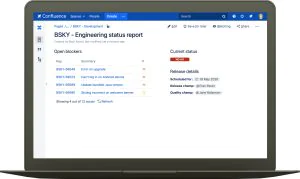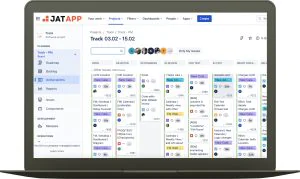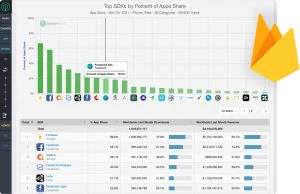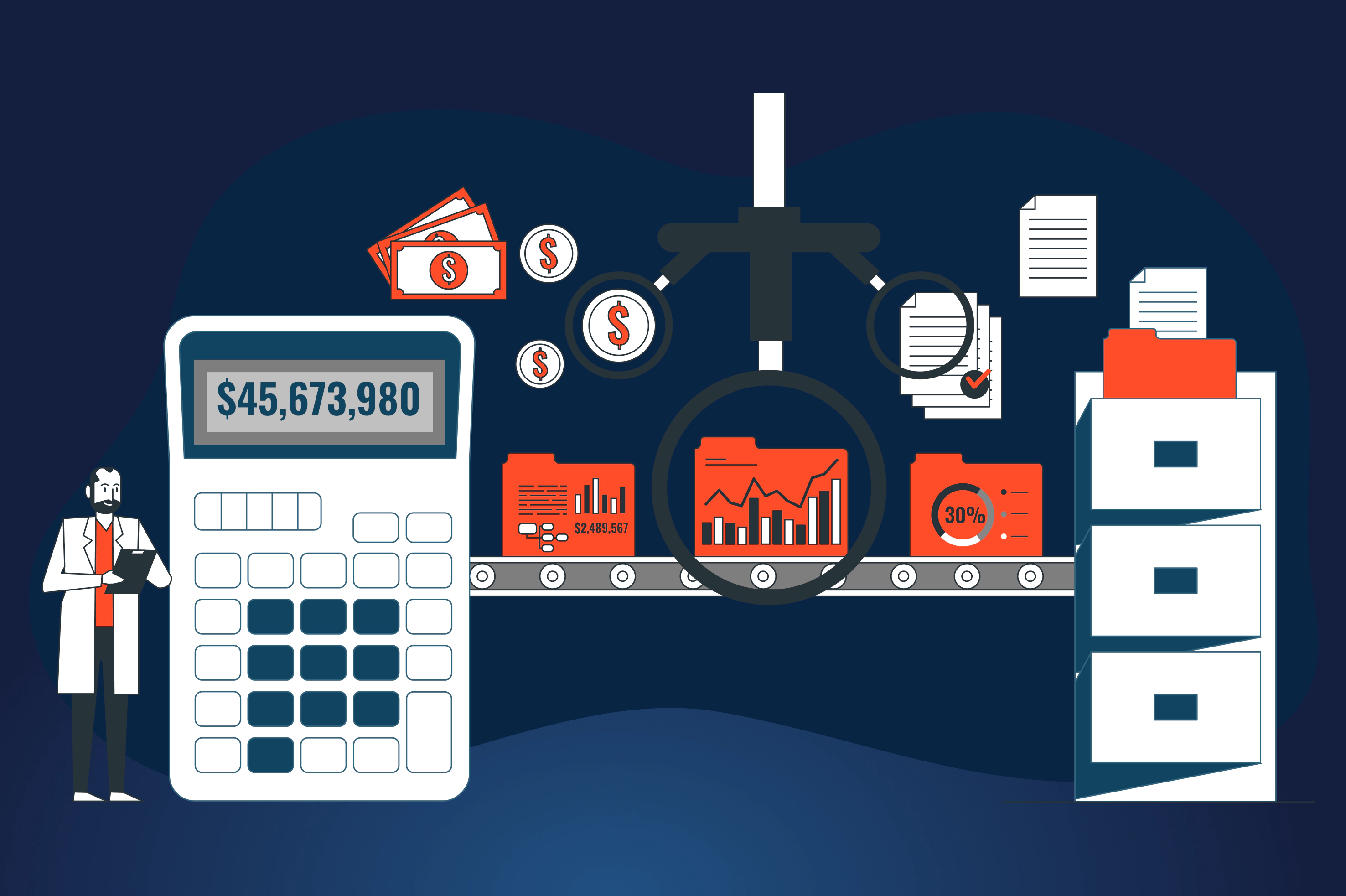Name a software as a service (SaaS) startup that raised the capital in Series A and you’ll hear a story of a successful product development strategy. Yes, the idea might be brilliant and teams might be technical megaminds too, but without an effective product strategy, your business wouldn’t stand a chance in a competitive environment.
Far be it from us to scare you from bringing your software to life, but it’s just for you to know: if you don’t make an effort to come up with a great strategy, fatal missteps can overtake you at any point of your journey. When the market is changing, you can fail to adapt to new requirements; when it’s time to take the risks, you may stubbornly continue to rely on incremental sales; when you’re launching your product, it may turn out to be not that different from competitors as you initially thought, and so on and so forth.
To avoid these marketing snarls along your way, you might want to use a hands-on guide on building a proper SaaS product strategy. Well, your wish is our command! The JatApp team has prepared an article for you to better grasp common product strategies and choose the one that suits your needs.
But before we begin, let’s make sure you know the difference between a product strategy and product vision.
A product strategy and product vision are two different things
People often confuse these terms, which, although closely related, mean quite different aspects in the SaaS product development process. A vision describes a company’s future and is created to motivate team members to do their job well every day. Strategy refers to the plan that outlines a clear path for employees to achieve the product vision.
A product vision doesn’t change in the course of time, helping employees navigate through organizational changes. By contrast, a strategy is a sort of guideline that team members can modify and revise to respond to the market conditions and user needs.
Now, it’s high time that we get into the main product growth strategies.
What are the most common SaaS product growth strategies?
As the SaaS market continues to boom, it becomes extremely important for businesses to have the right product growth strategies that allow them to stay profitable in a highly competitive environment. There are four common product growth strategies: market penetration, product development, market development, and diversification.
Market penetration: Lesson from Dropbox
When choosing market penetration, you don’t place a risky bet on your product. A SaaS business that adopts this low-risk strategy tries to boost the sales volumes of their existing product in the established market. This approach means relying on different marketing tricks to improve brand loyalty and client retention. For example, a company can invest in creating engaging high-quality content to generate more leads.
Dropbox is a well-known cloud storage SaaS platform that uses market penetration to attain their growth goals. The company regularly offers different promo codes and lures clients with their annual plan that guarantees 10-15% off. Thanks to this strategy, DropBox was able to gain a significant market share and stay ahead of other cloud storage players.
Dropbox coupon code
Product development: Salesforce’s triumph
Product development refers to the approach that allows businesses to attract more customers in the existing market by delivering new products. Suppose you’re running a restaurant that serves pizzas only. To appeal more to your target audience, you perform extensive market research and find out that your customers are Italian cuisine lovers. Given that fact, expanding your menu to include pastas would be an effective product development strategy in this case.
To give you an example in the SaaS space, let’s take Salesforce. This customer relationship (CRM) company focuses on expanding its product offerings. Salesforce continuously releases new customer service, marketing automation, and analytics tools, which helped the company become a global behemoth in the cloud-based software market.
Salesforce analytics tool
Market development: Zoom’s story
The strategy centers around taking the current product to new markets and shifting the focus on new clients. Being the high-risk strategy, market development is known for its ability to bring significant returns. Pursuing this strategic approach makes sense only if you’re an established company and have enough capital and resources.
Zoom can serve you an example of market development. When the company first launched its video conferencing software, it originally focused on small teams and remote workers. After the coronavirus outbreak and lockdowns, Zoom managed to substantially expand its user base by targeting big corporations and educational institutions.
Zoom functionality
Diversification: A secret of Atlassian’s success
The diversification strategy means releasing a new product in an entirely new market, where you have little to no experience. You might play with fire when choosing the diversification strategy over others. The thing is that many businesses use this approach as the last resort when they face a financial downturn.
Atlassian is a perfect example of a risk taker that benefited from using the diversification strategy. Over the years, the SaaS company, known for its issue tracking software, Jira, has managed to build a range of tools, like Confluence, a team collaboration solution, Trello, project management software, and Bitbucket, a code management tool. The company has increased its market share by attracting customers from different sectors who need effective productivity and collaboration tools.
Confluence functionality
Now that we’re aware of the main product strategies, let’s discuss what steps you need to take to choose your own.
How to choose a SaaS product strategy in 6 steps
SaaS businesses normally go through six consecutive steps when selecting their product strategy.
Find your tribe for better connection
Trying to be everything for everyone is a shortcut to the dead end. Before you start building your SaaS application, you should clearly understand your target audience. Otherwise, there is a fat chance customers will find your product at least somewhat appealing to them.
Conduct thorough research to see your customers’ demographics, needs, desires, habits, and so on. Then, you may rely on these insights to create user personas to picture your ideal client. Focusing on a specific niche offers you clarity on your product, customer experience, pricing, technology requirements, and marketing strategies.
Pinpoint a value proposition to set your product apart
Customers usually buy products mainly because they want to achieve a specific goal. For example, I recently bought a new paintbrush that allows me to draw the smallest details. Though I don’t like the brush itself, it helps me to make my paintings more sophisticated, or the value proposition this brush provides.
Users who buy software have the same attitude. Of course, they may be excited about the product’s bells and whistles, but after all, it’s the end result that matters. The question is: How do you help your clients achieve the desired outcome better than competitors? Make sure you understand what your company offers that others don’t. You’ll also need to define how your solution is going to relieve customers’ major pain points.
Clarify the product vision and goals to bring your software to life
As said, your product vision statement should be your long-term goal that guides your employees in their daily work. It should describe what success of your SaaS brand looks like and highlight the benefits that your company brings to your clients. A good vision fires your team members with enthusiasm and commitment and is aligned with your overall mission.
Your goals should be Specific, Measurable, Achievable, Relevant, and Time-bound (SMART). Concrete goals not only organize your team around the tasks you’ll need to complete but also give them a sense of direction. What’s more, the SMART goals approach boosts accountability and helps with timing.
Conduct a competitor analysis to stay ahead of the game
The next step would be to look at the competitive landscape. You need to conduct a comprehensive competitive analysis to define your Strengths, Weaknesses, Opportunities, and Threats (SWOT), which, in turn, helps you to see the forest and not just a few trees. The SWOT analysis allows you to evaluate the company’s situation in the market before you introduce a new product strategy.
Recently, one of our SaaS clients turned to us with a common goal: to become a leader in their niche. They were building an artificial intelligence (AI)-powered plant identification solution, but they knew they needed a competitive edge to stand apart from competitors.
JatApp used such tools as Meta Ad Library, SensorTower, and data.ai to conduct a thorough competitor analysis. Our team analyzed the competitors’ features, pricing, and marketing strategies, as well as customer feedback to better understand what was working and what wasn’t. Based on our research, we were able to implement a killer feature that most competitors weren’t offering at that time: a chat with professional botanists for assistance. As a result, our client has received many positive reviews and managed to get 4.1 out of 5 rating from their customers.
The chat feature of the plant identification app
Build a SaaS product development roadmap to navigate your journey
No planning always means planning to suffer cost overruns, miss deadlines, and fail to fulfill the product vision. Therefore, we recommend starting any project with discovery and building a product roadmap. A roadmap refers to the presentation of the product vision, priorities, direction, and progress of a SaaS solution over time. A strategic and transparent plan will help your team pivot quickly even in the face of market disruptions, saving lots of time and resources.
JatApp roadmap for developers
First, you need to understand what functionalities you’re going to build to attain your goals. Then, it’s essential to prioritize features based on your business objectives and impact on your clients. Remember that your roadmap should be flexible enough to allow you to introduce changes, when the market or user preferences change.
Set metrics to measure your progress
Last but not least, define the metrics and key performance indicators (KPIs) to track your performance as you progress through the project. Metrics can include customer retention, acquisition, user engagement, and revenue. There are a wide range of data analytics tools out there that would help you measure these metrics.
We at JatApp use mostly SensorTower to assess app performance in the market and compare with that of competitors in real time. Measuring your progress will help you get a clear picture of when you need to take a risk, when to be on a safe side, when to grow and when to pull back. When necessary, you can modify your product development strategy based on the metrics.
SensorTower functionality
Turn to JatApp to choose the right SaaS product strategy
Innovative SaaS ideas are like fragile shoots that can turn into an abundant harvest with the right care. Just as a gardener that has a specific plan on how to nurture their plant, business owners should build and market their products based on an effective product development strategy.
Do you find yourself struggling to decide which strategy suits your SaaS business best? Or maybe you’re doubting whether your choice would lead you to success? JatApp is here for support and guidance. With in-depth knowledge in different industries, including real estate, finance, education, and HR & recruitment, we can recommend a product strategy that would drive your business forward.
Based on our seven year-experience, we at JatApp are convinced that each SaaS business deserves a unique approach. Therefore, we conduct brainstorming sessions to better understand clients’ specific goals, needs, and challenges. It’s no wonder that most clients don’t want to say farewell to us for three years on average.
Whether you’re a startup looking for a firm ground or an established company willing to grow, contact us today to choose the most effective product strategy for your business.










